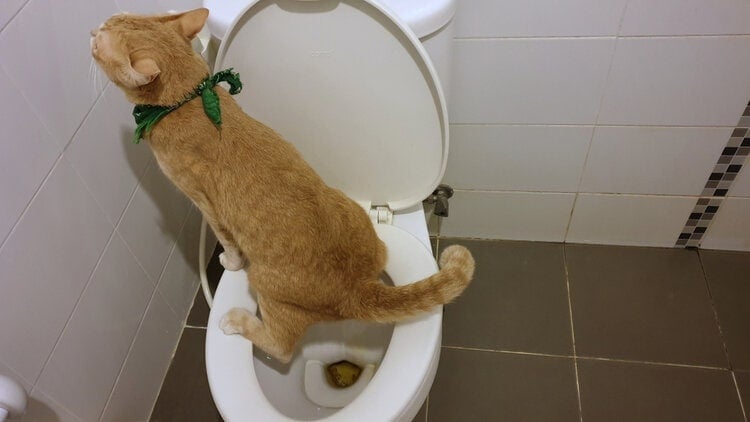Just how do you actually feel with regards to How to Dispose of Cat Poop and Litter Without Plastic Bags?

Introduction
As cat proprietors, it's essential to bear in mind exactly how we dispose of our feline good friends' waste. While it may appear hassle-free to flush feline poop down the commode, this practice can have damaging effects for both the setting and human health.
Alternatives to Flushing
Thankfully, there are much safer and a lot more accountable methods to take care of pet cat poop. Take into consideration the complying with choices:
1. Scoop and Dispose in Trash
The most common approach of taking care of feline poop is to scoop it into a biodegradable bag and toss it in the garbage. Make certain to make use of a committed trash scoop and get rid of the waste quickly.
2. Use Biodegradable Litter
Go with naturally degradable cat clutter made from materials such as corn or wheat. These clutters are environmentally friendly and can be securely dealt with in the garbage.
3. Bury in the Yard
If you have a lawn, consider burying pet cat waste in an assigned location away from veggie yards and water sources. Make sure to dig deep adequate to prevent contamination of groundwater.
4. Install a Pet Waste Disposal System
Purchase a pet waste disposal system particularly created for pet cat waste. These systems make use of enzymes to break down the waste, lowering smell and environmental impact.
Health and wellness Risks
Along with environmental concerns, purging pet cat waste can also position health and wellness dangers to human beings. Feline feces might consist of Toxoplasma gondii, a parasite that can create toxoplasmosis-- a potentially severe disease, particularly for pregnant ladies and individuals with weakened body immune systems.
Ecological Impact
Flushing pet cat poop presents harmful virus and parasites right into the water system, posing a substantial risk to marine ecological communities. These pollutants can adversely influence aquatic life and concession water top quality.
Final thought
Responsible pet dog ownership prolongs beyond providing food and sanctuary-- it also includes correct waste management. By refraining from purging cat poop down the bathroom and going with alternative disposal methods, we can reduce our environmental footprint and safeguard human health and wellness.
Why Can’t I Flush Cat Poop?
It Spreads a Parasite
Cats are frequently infected with a parasite called toxoplasma gondii. The parasite causes an infection called toxoplasmosis. It is usually harmless to cats. The parasite only uses cat poop as a host for its eggs. Otherwise, the cat’s immune system usually keeps the infection at low enough levels to maintain its own health. But it does not stop the develop of eggs. These eggs are tiny and surprisingly tough. They may survive for a year before they begin to grow. But that’s the problem.
Our wastewater system is not designed to deal with toxoplasmosis eggs. Instead, most eggs will flush from your toilet into sewers and wastewater management plants. After the sewage is treated for many other harmful things in it, it is typically released into local rivers, lakes, or oceans. Here, the toxoplasmosis eggs can find new hosts, including starfish, crabs, otters, and many other wildlife. For many, this is a significant risk to their health. Toxoplasmosis can also end up infecting water sources that are important for agriculture, which means our deer, pigs, and sheep can get infected too.
Is There Risk to Humans?
There can be a risk to human life from flushing cat poop down the toilet. If you do so, the parasites from your cat’s poop can end up in shellfish, game animals, or livestock. If this meat is then served raw or undercooked, the people who eat it can get sick.
In fact, according to the CDC, 40 million people in the United States are infected with toxoplasma gondii. They get it from exposure to infected seafood, or from some kind of cat poop contamination, like drinking from a stream that is contaminated or touching anything that has come into contact with cat poop. That includes just cleaning a cat litter box.
Most people who get infected with these parasites will not develop any symptoms. However, for pregnant women or for those with compromised immune systems, the parasite can cause severe health problems.
How to Handle Cat Poop
The best way to handle cat poop is actually to clean the box more often. The eggs that the parasite sheds will not become active until one to five days after the cat poops. That means that if you clean daily, you’re much less likely to come into direct contact with infectious eggs.
That said, always dispose of cat poop in the garbage and not down the toilet. Wash your hands before and after you clean the litter box, and bring the bag of poop right outside to your garbage bins.
https://trenchlesssolutionsusa.com/why-cant-i-flush-cat-poop/
:max_bytes(150000):strip_icc()/0S1A1090-49a8e2c66f8e41d6901f2559787a7f24.jpg)
I hope you liked our post on Don’t flush cat feces down the toilet. Thanks for spending some time to browse our piece of content. Loved our blog? Please share it. Help someone else check it out. I treasure reading our article about Don’t flush cat feces down the toilet.
Source
Comments on “Why You Should Avoid Flush Cat Poop Down Your Toilet - Crucial Facts”